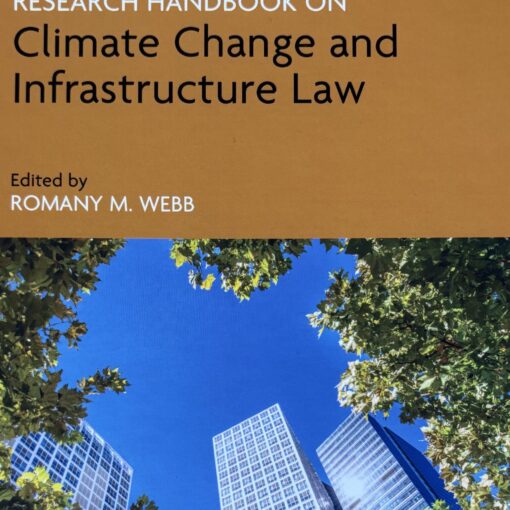
On March 13, 2023, the Bureau of Land Management (“BLM”) approved a major oil drilling operation on the North Slope of Alaska. The so-called “Willow Project” will be developed by ConocoPhillips and involve the drilling of up to 199 new oil wells, spread across three well pads, along with the construction of various related infrastructure, including pipelines, processing facilities, roads, and boat ramps. All of this activity is expected to have serious adverse impacts on the local environment and nearby communities. It will also worsen global climate change. The Willow Project is expected to produce as much as 180,000 barrels of oil per day at its peak and result in around 130 million metric tons of carbon dioxide-equivalent over its lifetime.
Approval of the Willow Project runs directly counter to President Biden’s campaign promise to stop oil and gas drilling on federal lands. It is also counter to his administration’s goal of halving economy-wide greenhouse gas emissions by 2030 and reaching net zero emissions by 2050. The approval has angered many climate activists and others who see it as a “stain” on President Biden’s climate legacy. In the weeks since the approval was announced, the Biden administration has tried to paint a different picture, suggesting that it had no choice but to approve the Willow Project. But is that really the case? This post explores the scope of BLM’s authority to block oil and gas drilling on federally-owned land in situations where the land has already been leased to a private party for the specific purpose of developing oil and gas resources.
History of Oil and Gas Development on Alaska’s North Slope
ConocoPhillips has held leases on federal land on Alaska’s North Slope since 1999. The leased land forms part of the National Petroleum Reserve in Alaska (the “NPR-A”)—an area covering approximately 23 million acres that was set aside in 1923 by President Harding who, believing the land contained significant fossil fuel resources, designated it as an emergency oil supply for the U.S. Navy.
In 1976, in the National Petroleum Reserves Act (“Reserves Act”), Congress transferred authority over the NPR-A from the Secretary of the Navy to the Secretary of the Interior. As originally enacted, the Reserves Act prohibited the Secretary of the Interior from leasing land in the NPR-A for oil, gas, or other development (subject to limited exceptions). However, in 1980, Congress amended the Reserves Act to remove the prohibition and direct the Secretary of the Interior to “conduct an expeditious program of competitive leasing of oil and gas” in the NRP-A. The Secretary of the Interior delegated this leasing authority to BLM, which held its first oil and gas lease sale, covering 1.5 million acres of land in the NPR-A, in December 1981.
In the decades since, BLM has continued to lease land in the NPR-A for oil and gas development, offering a total of 59.7 million acres between 1999 and 2019. Interestingly, though, oil and gas developers only bid on about 7 million acres or 11% of the total land offered for lease. (As discussed in a previous post on this blog, this is consistent with BLM’s experience in the contiguous U.S., where only a small portion of the federal land it has offered for lease in recent years has received bids.)
The Legal Effect of Oil and Gas Leases
Oil and gas leases issued by BLM grant the lessee “the exclusive right to drill for, mine, extract, remove and dispose of all the oil and gas . . . in the land.” This, together with the fact that ConocoPhillips has held oil and gas leases in the NPR-A for over 20 years, has led some to conclude that BLM had to approve the Willow Project. For example, in defending BLM’s approval of the project, White House Press Secretary Karine Jean-Pierre told reporters: “some of the company’s leases are decades old, granted by prior administrations. The company has a legal right to those leases. [BLM’s] options are limited when there are legal contracts in place.”
It is certainly true that ConocoPhillips has a legal right to the leases. As discussed in a previous blog post, BLM can only cancel NPR-A leases in two, limited circumstances:
- If a lease is not producing oil and gas, it may be cancelled if the lessee fails to comply with any legal requirement imposed on him/her/it.
- If a lease is producing or “known to contain valuable deposits of oil or gas,” it can only be cancelled “by court order.”
The land covered by ConocoPhillips’ NPR-A leases falls into the second category. It is known to contain valuable deposits of oil and gas because, in 2016, ConocoPhillips drilled two exploratory wells that “encountered significant pay.” The Biden administration could not, therefore, unilaterally cancel ConocoPhillips’ leases. But there might be other ways for the administration to limit, or perhaps even block, extraction of oil and gas pursuant to those leases.
As noted above, BLM leases grant the lessee exclusive rights to extract oil and gas, but those rights are “granted subject to applicable laws, the terms, conditions, and . . . stimulations of th[e] lease, [and] the Secretary of the Interior’s regulations and formal orders.” (It should be noted that this quote is from the current “form lease” used by BLM. The author was not able to review the leases BLM entered into with ConocoPhillips and thus cannot confirm that they contain similar language. Statements by BLM suggest they do, however. For example, BLM has previously said that ConocoPhillips’ leases entitle it to extract oil and gas resources, “subject to regulation.” The analysis that follows assumes the ConocoPhillips leases contain the language quoted above.)
The “applicable laws” include the Reserves Act, which directs the Secretary of the Interior to take steps to protect the “environmental, fish and wildlife, and historical or scenic values” within the NPR-A. The Reserves Act further provides that, when issuing oil and gas leases, the Secretary of the Interior “shall include or provide for such conditions, restrictions, and prohibitions as the Secretary deems necessary or appropriate to mitigate reasonably foreseeable and significant adverse effects on the surface resources of the NPR-A.”
One way in which BLM seeks to minimize the adverse impacts of oil and gas development on surface resources is by regulating drilling operations in the NPR-A. Under BLM regulations, before any oil or gas well can be drilled under an NPR-A lease, the lessee must submit an application for permit to drill (APD) to BLM. The APD must include a surface use plan of operations specifying, among other things, the location of any proposed drill pads, the method of pad construction, and other activities to be undertaken in connection with drilling. A lessee can choose to submit a single plan—known as a master development plan (MDP) – that covers multiple APDs.
BLM regulations provide that, upon receiving an APD, BLM “shall take one of the following actions . . . (1) Approve the application as submitted or with appropriate modifications or conditions; [or] (2) Return the application and advise the application of the reasons for disapproval.” The regulations are clear that, if BLM selects option (2) and disapproves the APD, “[n]o drilling operations, nor surface disturbance preliminary thereto, may be commenced.”
BLM also has authority to suspend previously approved drilling operations in certain circumstances. Under BLM regulations, operations may be suspended if, among other things, BLM determines that suspension “is in the interests of conservation of natural resources” or “mitigates reasonably foreseeable and significant adverse effects on surface resources.”
Implications for the Willow Project
What does all of this mean for the Willow Project? ConocoPhillips submitted an MPD for the Willow Project in May 2018. After conducting an environmental review, BLM approved the MPD in October 2020. However, in August 2021, the approval decision was vacated by the Federal District Court for the District of Alaska in Sovereign Iñupiat for a Living Arctic v. BLM.
The court held that the environmental review conducted by BLM did not meet the requirements of the National Environmental Policy Act (“NEPA”). Among other things, the court found that BLM had inappropriately constrained the range of alternatives it considered in the environmental review because it believed that “ConocoPhillips’ lease rights precluded the agency from considering alternatives concerning the configuration or location of the drill pads.” According to the court:
“BLM maintained that ConocoPhillips has the right to extract all the oil and gas possible within the leased area. But . . . [t]he leases do not grant the lessee the unfettered right to drill wherever it chooses or categorically preclude BLM from considering alternative development scenarios. Further, BLM’s asserted restriction on its authority is inconsistent with its own statutory responsibility to mitigate adverse effects on the surface resources . . . To the extent BLM relied on this reason to not examine other alternatives, its alternatives analysis was inadequate.”
Following the court’s decision, BLM prepared a supplemental Environmental Impact Statement (“EIS”), in which it considered one additional alternative. Based on the supplemental EIS, BLM approved ConocoPhillips’ MDP, with some modifications. Whereas BLM had initially approved the drilling of up to 251 wells across five drill pads, following completion of the supplemental EIS, BLM approved a scaled-down version of the Willow Project involving the drilling of up to 199 wells across three pads.
The supplemental EIS has been challenged in court, again, on the basis that BLM’s alternatives analysis was inadequate (among other grounds). Environmental groups challenging BLM’s decision allege that “it has again analyzed an inadequate range of alternatives in the [supplemental] EIS based on the mistaken conclusion that it must allow ConocoPhillips to fully develop its leases.” The groups note that, in the supplemental EIS, “BLM asserted that it must allow access to at least some of the subsurface resources under all of [ConocoPhillips’] leases with a demonstrated development potential, that it may not permit a development proposal that would strand an economically viable quantity of oil, and that it is obligated to approve development of leases in some form.”
These statements arguably misrepresent BLM’s statutory authority and obligations. As noted above, under the Reserves Act, BLM can impose “conditions, restrictions, and prohibitions” on oil and gas development in the NPR-A as “necessary or appropriate to mitigate reasonably foreseeable and significant adverse effects on . . . surface resources.”
Climate change is already having significant adverse effects on the surface resources of the NPR-A. According to the supplemental EIS prepared for the Willow Project, “[m]inimum temperatures in the Arctic have increased at about three times the global rate over the past 50 years,” resulting in the “loss of sea ice and snow cover.” The supplemental EIS notes that “[p]ermafrost loss in Alaska’s North Slope is already widespread.” Unless greenhouse gas emissions are rapidly reduced, “further warming will lead to further reductions of near-surface permafrost volume.” There will also be a decrease in snow cover, “with a later date of first snowfall and an earlier snowmelt,” which will “reduce water storage and increase the risk and extent of wildland fires and insect outbreaks in the region.”
It could be argued that, since the root cause of these adverse effects is greenhouse gas emissions, BLM must take steps to reduce those emissions to fulfill its Reserve Act obligations. BLM might seek to reduce emissions by restricting, or even prohibiting, the drilling of new oil wells as part of the Willow Project. This seems entirely appropriate given that emissions from the Willow Project could, by BLM’s own estimates, cause somewhere between $3 billion and $38 billion worth of climate-related damages (depending on the social cost of carbon used to value those damages). In these circumstances, restricting or even preventing drilling arguably would not violate ConocoPhillips’ lease rights.
The courts have previously held that lessees are not automatically entitled to permits to extract oil and gas from land they lease from the federal government. This was made clear by the U.S. Court of Appeals for the Federal Circuit in Marathon Oil Co. v. United States. The plaintiff in that case—Marathon Oil—had been denied a permit to extract oil from offshore land it leased from the federal government under the Outer Continental Shelf Lands Act (OCSLA). Similar to the Reserves Act, the OCSLA authorizes the Secretary of the Interior to issue leases for oil and gas development on certain federal land, located offshore in an area known as the Outer Continental Shelf. The OCSLA provides that, before a lessee may develop oil and gas resources pursuant to a lease, he/she/it must have a plan of operations approved by the Secretary of the Interior.
In Marathon Oil Co v. United States, the Federal Circuit noted that leases issued under the OCSLA “grant lessees the exclusive right to drill for, develop, and produce oil and gas resources.” But, according to the court, “[o]btaining a lease is one thing; obtaining the necessary permits to explore and then produce is another.”
The Federal Circuit held that the Secretary of the Interior did not violate Marathon Oil’s lease rights when it refused to approve a plan of operations for the development of oil and gas resources in the leased area. The court noted that, under Marathon Oil’s lease, the right to drill for oil and gas resources “was expressly conditioned on compliance with [applicable] . . . statutory and regulatory provisions” that aimed to, among other things, protect coastal ecosystems. The court determined that the statutory requirements for approval of Marathon Oil’s plan of operations had not been met. Thus, according to the court, “[u]nder the circumstances of this case, to treat Marathon’s failure to obtain the necessary approvals and permits for exploratory activity as a breach of contract by the Government would be to eviscerate these salutary protections of the nation’s fragile coastal lands and waters.”
On appeal, the Federal Circuit’s decision was reversed by the Supreme Court, but on slightly different grounds. In short, the Supreme Court found that the Secretary of the Interior had not refused to approve Marathon Oil’s plan of operations because it did not meet the statutory requirements for approval, but due to other factors. Arguably, then, the Supreme Court’s ruling does not invalidate the above reasoning.
While Marathon Oil Co. v. United States involved offshore leasing, which is governed by a different statutory regime, the Federal Circuit’s reasoning could be applied to the Willow Project. Similar to the OCSLA, the Reserves Act authorizes the Secretary of the Interior to issue oil and gas leases on federal land, but provides that development pursuant to those leases “shall” be restricted or prohibited as necessary to minimize environmental disturbance. BLM arguably does not violate the terms of oil and gas leases by imposing such restrictions or prohibitions.
Supporters of the Willow Project might assert that the Reserves Act only authorizes BLM to restrict or prohibit development where necessary to “mitigate . . . adverse effects on the surface resources of the NPR-A.” They might further argue that surface resources are only indirectly affected by greenhouse gas emissions from the Willow Project—i.e., via climate change, which a wide range of other activities also contribute to—and that the Reserves Act does not expressly authorize BLM to prevent or restrict development based on indirect climate impacts. The case law suggests otherwise, however.
No court has, so far, ruled on the scope of BLM’s authority to restrict or prevent oil and gas development on climate grounds. Notably, however, multiple federal courts have held that BLM is required to consider greenhouse gas emissions and associated climate impacts when conducting environmental reviews of oil and gas projects pursuant to NEPA (see here for an example). This is significant because the courts have also held that an agency, like BLM, is only required to “gather or consider environmental information” in its NEPA review if the agency has “statutory authority to act on that information.” Thus, by holding that BLM is required to consider climate impacts in its NEPA reviews, the courts have suggested—at least implicitly–that BLM could act on that information.
These and other issues are sure to be hotly debated in the litigation over the Willow Project. The outcome of the litigation remains uncertain. It is, however, clear that there was no easy “win” for the Biden administration when it came to the Willow Project. The administration faced significant legal and political risks whatever decision it made. It is already feeling the political blowback from approval of the Willow Project and, as this blog explains, faces legal risks as well. On the other hand though, rejecting the project would also have exposed it to political blowback, and likely legal action as well.

Romany Webb
Romany Webb is a Research Scholar at Columbia Law School, Adjunct Associate Professor of Climate at Columbia Climate School, and Deputy Director of the Sabin Center for Climate Change Law.




